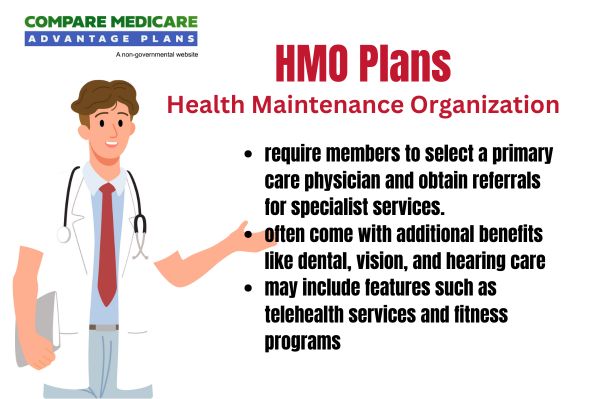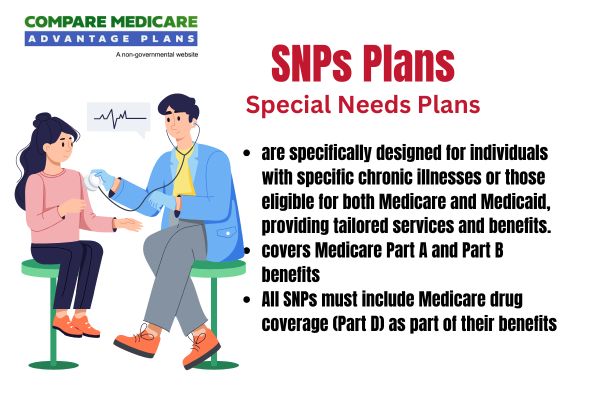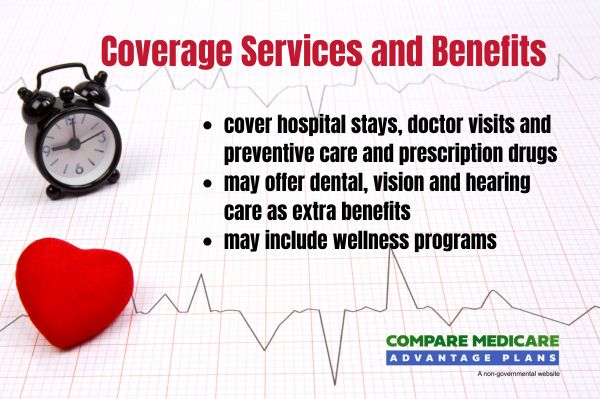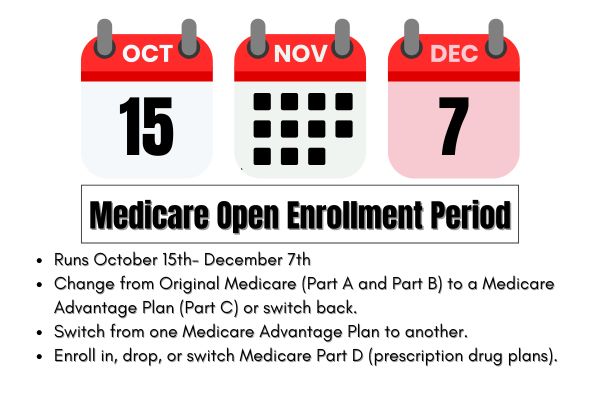Medicare Advantage Plans Illinois 2026
Wondering what Medicare Advantage plans Illinois
Key Takeaways
- Illinois offers a diverse range of Medicare Advantage Plans, including HMO, PPO, and SNPs, designed to cater to different healthcare needs and financial situations.
- Beneficiaries can expect lower out-of-pocket costs and additional benefits, such as vision and dental coverage, with 60% of enrollees projected to have zero-dollar premium plans in 2025.
- Understanding the enrollment periods and costs associated with these plans is crucial for making informed healthcare decisions, with the annual out-of-pocket maximum set at $2,000 for 2025.
Compare Plans in One Step!
Enter Zip Code
Understanding Illinois Medicare Advantage Plans 2026

Illinois offers a competitive landscape for Medicare Advantage Plans, particularly in urban areas where options are more abundant. This dynamic setting provides residents with a unique framework that influences how these plans are structured and made available. The state’s regulations significantly impact the accessibility and flexibility of switching between different Medicare plans, so beneficiaries should stay informed about their choices.
These plans are a collaboration between private insurance companies and Medicare, designed to provide an alternative to Original Medicare. The largest health insurer, such as Health Alliance subsidiaries health alliance, plays a pivotal role in offering diverse health plans to meet various needs.
As healthcare decisions become increasingly complex, understanding the nuances of Illinois Medicare Advantage Plans helps in making informed choices that optimize health outcomes and financial well-being.
Types of Illinois Medicare Advantage Plans Available
Illinois offers a variety of Medicare Advantage plans to cater to different healthcare needs, including Health Maintenance Organization (HMO), Preferred Provider Organization (PPO), and Special Needs Plans (SNPs). Each type of plan comes with its own set of rules, benefits, and costs, tailored to meet the diverse needs of beneficiaries.
These options assist in choosing the plan that best aligns with your healthcare requirements and lifestyle.
HMO Plans

Health Maintenance Organization (HMO) plans are popular in Illinois due to their lower premiums and out-of-pocket costs. These plans typically require members to select a primary care physician (PCP) and obtain referrals to see specialists, ensuring coordinated and comprehensive care. The health insurance industry often views HMOs as a cost-effective option that still provides quality healthcare services, including those offered by carle health.
HMO plans focus on preventive care and wellness programs, often covering additional services at no extra cost. This can include routine check-ups, screenings, and wellness initiatives aimed at improving overall health outcomes. Health plan employees work diligently to support claims processing and ensure members receive the benefits they are entitled to.
However, HMO plans require members to use a specific network of doctors and hospitals. This restriction ensures that care is managed efficiently and effectively, often leading to better health outcomes. In southern Illinois, where healthcare providers might be more spread out, choosing an HMO plan can ensure consistent and coordinated care.
PPO Plans

Preferred Provider Organization (PPO) plans offer greater flexibility compared to HMOs, allowing members to see any healthcare provider without needing a referral. This freedom benefits patients who may need to consult multiple specialists. PPO plans do not require members to choose a primary care physician, providing more autonomy in healthcare decisions.
However, this flexibility comes at a cost. PPO plans often have higher premiums and deductibles compared to HMOs. Members can see out-of-network providers, but this typically results in higher out-of-pocket expenses.
Despite the costs, PPO plans cover a wide range of healthcare services, including outpatient care, emergency services, and preventive screenings, making them a comprehensive option for beneficiaries.
Special Needs Plans (SNPs)

Special Needs Plans (SNPs) are designed to serve individuals with specific health needs, such as chronic conditions or those residing in institutional settings. Illinois is transitioning to a fully integrated dual-eligible special needs plan model for managed long-term services and supports for both dually eligible and Medicaid-only beneficiaries starting in 2027. This model aims to enhance care coordination and improve overall health outcomes for complex needs populations.
The state’s procurement emphasizes health equity and aims to reduce disparities in healthcare access among dually eligible individuals. Plans applying for this new model must demonstrate effective strategies for addressing social determinants of health and integrating behavioral health services into alternative payment models. These innovative solutions have consistently brought innovative solutions designed to provide comprehensive and quality care to those who need it most.
Overview of Illinois Medicare Advantage Plans
Medicare Advantage plans in Illinois offer a robust alternative to Original Medicare, often including additional benefits beyond what is covered under Parts A and B. These plans are designed to meet the diverse needs of beneficiaries, providing comprehensive healthcare services and added benefits.
With Medicare Advantage plans, residents can access a wider range of services, making it a valuable option for those seeking enhanced coverage and better health outcomes.
Covered Services and Benefits

Medicare Advantage plans in Illinois cover essential healthcare services, including hospital stays, outpatient care, and preventive services. These plans often include prescription drug coverage, which is a significant advantage over Original Medicare. The health insurance industry has evolved to provide these comprehensive packages, ensuring that beneficiaries receive well-rounded care.
Beyond the core services, many Medicare Advantage plans offer additional benefits such as vision, dental, and hearing coverage. Wellness programs, including fitness memberships and chronic disease management, are also commonly provided. These programs are designed to improve health outcomes and enhance the quality of life for members.
Health plan employees play a crucial role in delivering these services, supporting claims processing, and ensuring that members receive excellent customer service. The diverse healthcare services and benefits make Medicare Advantage plans an attractive option for those looking to maximize their healthcare coverage and improve their overall well-being.
Key Benefits of Illinois Medicare Advantage Plans
One of the key benefits of Illinois Medicare Advantage plans is the lower out-of-pocket expenses compared to traditional Medicare. These plans often include benefits not covered by Original Medicare, such as vision, dental, and hearing coverage. Wellness programs, including gym memberships and fitness classes, are also common, promoting a healthier lifestyle for beneficiaries.
Another significant advantage is the coordinated care approach, where primary care providers manage patients’ overall health and streamline referrals to specialists. This ensures that care is well-organized and efficient, leading to better health outcomes. Additionally, Medicare Advantage plans typically have a cap on out-of-pocket costs, providing financial protection against unexpected health expenses.
Additional Health Services
Medicare Advantage plans often provide additional services not covered by Original Medicare, such as vision, dental, and hearing care. These plans may also offer wellness programs, fitness memberships, and transportation services to medical appointments. For individuals with chronic medical conditions, these additional services can be invaluable in managing their health and improving their quality of life.
Certain Medicare Advantage plans include coverage for alternative therapies like acupuncture or chiropractic services. Mental health services, including counseling and support for behavioral health, are also frequently covered.
Home health services, such as personal care assistance and skilled nursing care at home, are other significant benefits that these plans offer. These comprehensive services ensure that beneficiaries receive the care they need in various aspects of their health.
Enrollment Process for Illinois Medicare Advantage Plans 2026
Enrollment in an Illinois Medicare Advantage plan requires being enrolled in both Medicare Parts A and B. The process involves selecting a suitable plan based on one’s healthcare needs and understanding the enrollment periods available.
Awareness of these periods is crucial for timely and effective enrollment.
When to Enroll
The Initial Enrollment Period for Medicare Advantage lasts seven months, starting three months before an individual turns 65 and ending three months after the month they turn 65. This period allows new beneficiaries to enroll in a Medicare Advantage plan.

Additionally, the Annual Enrollment Period (AEP) occurs from October 15 to December 7 each year, during which individuals can switch plans or join new ones. If a current plan is being discontinued, or if there are other qualifying circumstances, individuals may use a Special Enrollment Period (SEP) to enroll in a new plan.
The Medicare Advantage Open Enrollment Period (OEP), from January 1 to March 31, allows those already enrolled in a Medicare Advantage plan to switch plans or return to Original Medicare. These enrollment timelines ensure beneficiaries can effectively utilize their options and achieve the best operational and financial outcomes.
Different Enrollment Periods
There are specific enrollment periods for Medicare Advantage plans, including the Annual Enrollment Period (AEP) from October 15 to December 7, and Special Enrollment Periods (SEP) for unique circumstances. These periods allow Illinois residents to evaluate their healthcare needs and make necessary changes to their plans. The AEP is particularly important as it enables beneficiaries to switch plans or join new ones, with changes taking effect on January 1 of the following year.
Special Enrollment Periods are available for circumstances such as moving, losing other coverage, or qualifying for Medicaid. These periods allow beneficiaries to adjust their plans according to their changing healthcare needs.
Understanding these different enrollment periods helps ensure that beneficiaries can successfully compete in today’s health insurance environment.
OEP, AEP, Special Enrollment
The Open Enrollment Period (OEP) for Medicare Advantage plans occurs from January 1 to March 31 each year. During this time, beneficiaries can switch plans or revert to Original Medicare if their current plan no longer meets their needs. This period provides an opportunity for beneficiaries to reassess their healthcare coverage and make necessary adjustments.
The Annual Enrollment Period (AEP), from October 15 to December 7, is another critical time for beneficiaries to enroll in, switch, or drop Medicare Advantage plans or Part D plans.
Special Enrollment Periods (SEP) are available under specific circumstances, such as moving or losing other coverage, allowing beneficiaries to join or change plans outside the standard enrollment periods. Understanding these enrollment options ensures that beneficiaries can make informed healthcare decisions throughout the year.
Costs Associated with Illinois Medicare Advantage Plans 2026
Understanding the costs associated with Illinois Medicare Advantage plans is essential for making informed healthcare decisions. In 2025, the average monthly premium for these plans is projected to decrease to $17.00, down from $18.23 in 2024. This reduction in premiums makes these plans more affordable for many beneficiaries. Additionally, around 60% of Medicare Advantage enrollees will have plans with zero-dollar premiums in 2025, further enhancing affordability.
Out-of-pocket costs also play a crucial role in determining the overall affordability of Medicare Advantage plans. Starting in 2025, individuals with Medicare Part D will have their out-of-pocket spending capped at $2,000 annually. This cap helps protect members from high costs and provides financial peace of mind. Out-of-pocket costs include deductibles, copayments, and coinsurance for covered services, ensuring that beneficiaries are not overwhelmed by unexpected healthcare expenses.

Premiums and Co-Pays
Premiums and co-pays are critical components of the costs associated with Medicare Advantage plans. For 2025, approximately 60% of Medicare Advantage enrollees will have plans with zero-dollar premiums, making these plans highly attractive. The average monthly premium for these plans is projected to decrease to $17.00, down from $18.23 in 2024, reflecting an effort to make healthcare more affordable for seniors. Approximately 83% of enrollees will experience the same or lower premiums if they remain in their current Medicare Advantage plans.
Co-pays for services covered under Medicare Advantage plans can vary, but these plans often include supplemental benefits that help reduce overall out-of-pocket costs for enrollees. This structure can be particularly beneficial for managing rising prescription drug costs and other healthcare expenses.
Understanding the premiums and co-pay structures of different plans can help beneficiaries choose the most cost-effective option for their healthcare needs.
Out-of-Pocket Maximums
Out-of-pocket maximums are a crucial feature of Medicare Advantage plans, providing a cap on the total spending for covered services each year. For 2025, the annual limit on out-of-pocket expenses for Medicare Advantage enrollees is set at $2,000. This cap ensures that beneficiaries are protected from excessive healthcare costs and can plan their finances more effectively.
Different Medicare Advantage plans may have varying out-of-pocket limits, but they cannot exceed the federal cap established for each year. These limits include deductibles, copayments, and coinsurance for covered services, providing a safety net for beneficiaries against high medical expenses.
Understanding these maximums is essential for making informed decisions about healthcare coverage and managing considerable financial strain while improving operational and financial efficiency.
Covered Services and Benefits
Medicare Advantage plans in Illinois offer a comprehensive range of covered services and benefits, including hospital stays, outpatient care, and preventive services. These plans often include prescription drug coverage, which is a significant advantage over Original Medicare. The inclusion of such core services ensures that beneficiaries receive essential healthcare without worrying about additional costs.
Moreover, many Medicare Advantage plans offer additional benefits such as vision, dental, and wellness programs. These programs are designed to improve health outcomes and enhance the quality of life for members.
Health plan employees play a crucial role in delivering these services, supporting claims processing, and ensuring that members receive excellent customer service. The variety of services covered by Medicare Advantage plans makes them a valuable option for comprehensive healthcare coverage.
How to Qualify for Illinois Medicare Advantage Plans 2026

Qualification for Medicare Advantage plans in Illinois requires enrollment in both Medicare Part A and Part B, residing in the service area of the private insurance company offering the plan, and not being enrolled in another Medicare prescription drug plan concurrently. Individuals aged 65 and older, as well as certain younger individuals with disabilities, can qualify for these plans.
Enrollment periods determine when individuals can join or switch Medicare Advantage plans. The Initial Enrollment Period spans seven months around an individual’s 65th birthday, allowing new beneficiaries to enroll.
The Annual Enrollment Period, from October 15 to December 7 each year, allows changes to existing plans. Special Enrollment Periods can be triggered by specific life events, such as moving or losing other coverage, allowing beneficiaries to adjust their plans as needed.
Contracted Network and Access to Care
Network adequacy standards for Medicare Advantage plans in Illinois are being updated to enhance access to behavioral health services, including new categories of providers. These changes ensure comprehensive care access and improve health outcomes for beneficiaries.
The proposed rules require Medicare Advantage plans to analyze their policies through a health equity lens to avoid disproportionate impacts on underserved populations. Dually eligible individuals will benefit from more integrated care plans that seamlessly cover both Medicare and Medicaid services.
These improvements in network adequacy and access to care are designed to provide better healthcare services for all beneficiaries.
Comparing Illinois Medicare Advantage Plans 2026 to Original Medicare
Medicare Advantage plans provide an alternative to Original Medicare, often offering additional benefits beyond Parts A and B. These plans typically include coverage for prescription drugs, vision, dental, and wellness programs, which are not automatically included in Original Medicare.
The broader range of services and the inclusion of out-of-pocket limits make Medicare Advantage plans a compelling option for many beneficiaries.
Coverage Differences
Medicare Advantage plans often include coverage for prescription drugs, which Original Medicare does not automatically include. These plans may also offer extra services like vision, dental, and wellness programs typically not available with Original Medicare. Unlike Original Medicare, which primarily covers hospital and outpatient care, Medicare Advantage plans provide coverage for a broader range of health services.
A significant difference is the inclusion of out-of-pocket limits in Medicare Advantage plans, which Original Medicare lacks. This cap on expenses provides financial protection and peace of mind for beneficiaries. Many Medicare Advantage plans offer integrated drug coverage, allowing members to manage their medical and prescription services under one plan.
Cost Comparisons
Costs for Medicare Advantage plans can vary significantly, often including premiums, deductibles, and out-of-pocket expenses that might differ from those under Original Medicare. Some Medicare Advantage plans may have lower out-of-pocket costs compared to Original Medicare, especially for services covered under the plan. The inclusion of out-of-pocket limits ensures beneficiaries are not overwhelmed by unexpected healthcare expenses.
Patients enrolled in Medicare Advantage may have lower copayments for services compared to the 20% coinsurance required by Original Medicare. This financial structure can provide significant savings for beneficiaries, making Medicare Advantage plans an attractive option for those looking to manage their healthcare costs more effectively.
Emergencies and Referrals

In HMO plans, members generally must use the network’s physicians and hospitals for covered services unless it’s an emergency. This requirement ensures coordinated care within the network but can be restrictive. Some HMO plans may not require referrals for accessing specialty care, providing more flexibility in certain situations. Point of Service (HMO-POS) plans allow members to go outside the network for certain health services, typically at an increased cost.
Preferred Provider Organization (PPO) plans offer more flexibility, allowing members to see any doctor or specialist without needing a referral.
In Illinois Medicare Advantage plans, members do not need prior authorization for emergency services, even if received from out-of-network providers. This ensures that beneficiaries are covered during emergencies regardless of the provider’s network status. Referral requirements for specialty care vary by plan type, with HMO plans often necessitating referrals, while PPO plans typically do not.
Summary
Illinois Medicare Advantage Plans
Frequently Asked Questions
→ When can I enroll in a Medicare Advantage plan in Illinois?
You can enroll in a Medicare Advantage plan in Illinois during the Initial Enrollment Period, Annual Enrollment Period, or Special Enrollment Period, based on your specific situation. Ensure you check the exact dates for each enrollment window to secure your coverage.
→ What additional benefits do Medicare Advantage plans offer compared to Original Medicare?
Medicare Advantage plans provide additional benefits such as vision, dental, hearing, wellness programs, and prescription drug coverage that Original Medicare does not include. This makes them a more comprehensive option for many beneficiaries.
→ How do out-of-pocket maximums work in Medicare Advantage plans?
Out-of-pocket maximums in Medicare Advantage plans cap your total annual expenses for covered services, safeguarding you from excessive healthcare costs. This means once you reach that limit, your plan covers 100% of your healthcare expenses for the remainder of the year.
→ Are there any zero-dollar premium Medicare Advantage plans available in Illinois?
Yes, there are zero-dollar premium Medicare Advantage plans available in Illinois, with around 60% of enrollees potentially having access to such options by 2025.
→ Do I need a referral to see a specialist with a Medicare Advantage plan?
Yes, whether you need a referral to see a specialist with a Medicare Advantage plan depends on the specific plan type; HMO plans usually require referrals, whereas PPO plans generally do not.

ZRN Health & Financial Services, LLC, a Texas limited liability company



